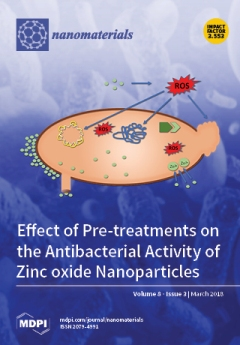Open AccessArticle
The Adsorption of Dextranase onto Mg/Fe-Layered Double Hydroxide: Insight into the Immobilization
by
Yi Ding 1,2,3, Le Liu 1,2,3, Yaowei Fang 1,2,3, Xu Zhang 4, Mingsheng Lyu 1,2,3,* and Shujun Wang 1,2,3,*
1
College of Marine Life and Fisheries, Huaihai Institute of Technology, Lianyungang 222005, China
2
Jiangsu Institute of Marine Resources Development, Huaihai Institute of Technology, Lianyungang 222005, China
3
Co-Innovation Center of Jiangsu Marine Bio-industry Technology, Huaihai Institute of Technology, Lianyungang 222005, China
4
Verschuren Centre for Sustainability in Energy & the Environment, Cape Breton University, Sydney, NS B1P 6L2, Canada
Cited by 19 | Viewed by 5325
Abstract
We report the adsorption of dextranase on a Mg/Fe-layered double hydroxide (Mg/Fe-LDH). We focused the effects of different buffers, pH, and amino acids. The Mg/Fe-LDH was synthesized, and adsorption experiments were performed to investigate the effects. The maximum adsorption occurred in pH 7.0
[...] Read more.
We report the adsorption of dextranase on a Mg/Fe-layered double hydroxide (Mg/Fe-LDH). We focused the effects of different buffers, pH, and amino acids. The Mg/Fe-LDH was synthesized, and adsorption experiments were performed to investigate the effects. The maximum adsorption occurred in pH 7.0 4-(2-hydroxyethyl)-1-piperazineethanesulfonic acid (HEPES) buffer, and the maximum dextranase adsorption uptake was 1.38 mg/g (416.67 U/mg); histidine and phenylalanine could affect the adsorption. A histidine tag could be added to the protein to increase the adsorption significantly. The performance features and mechanism were investigated with X-ray diffraction patterns (XRD) and Fourier transform infrared spectra (FTIR). The protein could affect the crystal structure of LDH, and the enzyme was adsorbed on the LDH surface. The main interactions between the protein and LDH were electrostatic and hydrophobic. Histidine and phenylalanine could significantly affect the adsorption. The hexagonal morphology of LDH was not affected after adsorption.
Full article
►▼
Show Figures






